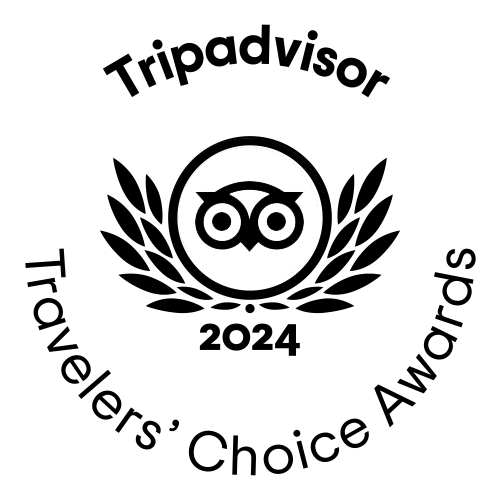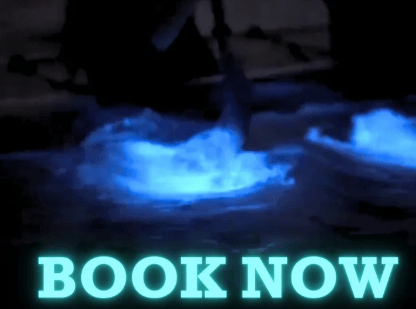Florida’s Bioluminescent Jellyfish Are Older than Dinosaurs. Here’s What You Need To Know To Go See Them!
- Where Do You Find Glowing Jellyfish in Florida?
If you love hanging around Florida’s hundreds of miles of coastline, there is a great opportunity for you tell see bioluminescent creatures. The comb jellies that are most often seen on Florida Bioluminescence Tours in winter are found in abundance in the Indian River Lagoon. This brackish estuary stretches from Ponce Inlet just north of Titusville all the way to Jupiter Inlet in Palm Beach county. The entire length is 156 miles.
2. How Do You See Bioluminescent Jellies?
Most people like to go on a night kayaking tour like BK Adventure’s winter Bioluminescence Tours. There, you paddle with a guide into the night waters to find the comb jellies. The guides know where the jellies are year round. However, there are times when you can see them just by wading a few feet into the water at the shoreline. We see comb jellies at the shore sometimes at Kelly Park East, in the Cocoa Beach and Cape Canaveral area.
The best way to experience them is on a kayaking or clear kayaking tour. The guide will scoop them in a net, and you will be able to observe them.
3. What Exactly ARE Comb Jellies?
First – they are NOT really jellyfish. They are more like a glowing jelly glob. But they are alive, and they are an important part of the eco-system.
They are also called Ctenophora – Ctenophora is a phylum of invertebrate animals that live in marine waters worldwide.
4. How are Comb Jellies like Dinosaurs?
They are pre-historic sea creatures that have been on the planet for over 500 million years. That makes them even older than dinosaurs. They are some of the first living organisms on the earth. That is why we must respect them and treat them with great care when we see them in the water.
5. Why Do these Bioluminescent Creatures Glow in the Water?
Comb Jellies protect themselves by giving off bioluminescent glow. They think it will scare any predators that might come their way… just like cavemen used fire at night to keep animals at bay, the jelly lights up at night when touched. They are translucent walnut-shaped creatures that patrol the open oceans for prey.
6. Do they sting?
They do not sting like their cousin Jelly Fish. They have
sticky cells called colloblasts that they use to catch their prey.
7. What Do They Eat?
Comb Jellies are important to our environment because they seem to love to eat the overgrowth of algae that come from sewer run-off and fertilizer created by human habitation.
8. What Is Gross About these Neon Globs?
The ctenaphore has one orifice from which to eat and defecate. That’s right, it poops the same place that it eats. Eww! They are also very stinky, so you would not want to swim with combs. Ask the guides at BK Adventure who often get wet on tours, Comb Jellies are super smellies.
9. How do Comb Jellies differ from the Bioluminescent Dinoflagellates?
They are actually nothing like dinoflagellates. However, they live in the same waters and can often be seen at the same time.
Dinoflagellates are plankton that photosynthesize to build energy to illuminate bioluminescent light and they are microscopic. Comb Jellies are more interactive in which you can run your hand through the water and catch them, hold them and see them illuminate the bioluminescent light in your hand.
10. When is the best time of year to see Bioluminescence Jellies?
On BK Adventure Bioluminescent Tours, we are see comb jellies year round, however; the most prominent time is November-March as the waters cool down.
11. Can you see them on a full moon night?
Yes, however they may be harder to locate, they are still everywhere in the Indian River Lagoon and Banana River. It is not that they go away, it is just that the light reflecting off the water makes the glow less prevalent.
12. Ready to See A Real World “Pandora?” Take A Tour with Us!
Take a Bioluminescence Tour on Rafts, Clear Kayaks, or Tandem Kayaks with BK Adventure to see Comb Jellies. These tours run every night of the year. If you are in Florida during summer, there’s a good chance to see both comb jellies and the magically glowing plankton at the same time! It is other-wordly! Book Online Here!
(Tours sell out in summer, so book early to reserve your spot. )









“The ctenaphore has one orifice from which to eat and defecate. That’s right, it poops the same place that it eats. Eww!”
Actually, this is false! Ctenophores have an anus, while jellyfish are the ones who spit out waste from their mouth. Scientists originally thought that they only had one opening for a while because they were fed incorrectly in labs, making them vomit the food they were given.